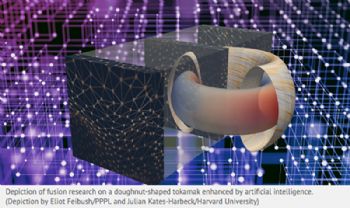
Researchers at the US Department of Energy’s (DOE) Princeton Plasma Physics Laboratory (PPPL) have used artificial
intelligence (AI) to create “an innovative technique to improve the prediction of disruptions in fusion energy devices”.
PPPL physicist Michael Churchill (
www.pppl.gov) based the new method on some of the technology used in a commercial ‘smart speaker and home assistant’; it enables the ‘deep learning form of AI machine learning’ to predict disruptions directly from raw high-resolution data from fusion experiments.
Mr Churchill says this capability provides a major advantage over many existing machine learning methods, as the technique not only uses unmodified raw data but also recognises and remembers early developments in a lengthy
sequence of events, which is difficult for current techniques to do.
Scientists around the world are seeking to replicate fusion on Earth for a safe, clean and virtually inexhaustible supply of power to generate electricity.
However, disruptions — the sudden loss of plasma control that halts fusion reactions — can seriously damage the inner walls of the doughnut-shaped tokamaks (fusion devices) that house the reactions.
Accurate predictions that lead to the avoidance of disruptions will therefore be essential for future devices.
Mr Churchill tested the new method on data from a single diagnostic that measures the temperature of electrons in the DIII-D National Fusion Facility (operated by General Atomics for the DOE).
The results showed that the technique can accurately predict early on if a disruption is imminent.
This information can be usedto trigger mitigation systems that safely shut down the discharge.
DIII-D has been the site of numerous pioneering contributions to the development of fusion energy science.
It continues the drive toward practical fusion energy, with critical research conducted in collaboration with more than 600 scientists at more than 100 institutions world-wide.